Don't miss our flash to bang SALES!
Sizing Charts
T-shirt sizes vary a lot from brand to brand, and that’s often confusing for shoppers. That’s why “how to measure a t-shirt” is one of the most commonly asked questions. Here’s a simple guide to help you do it right.
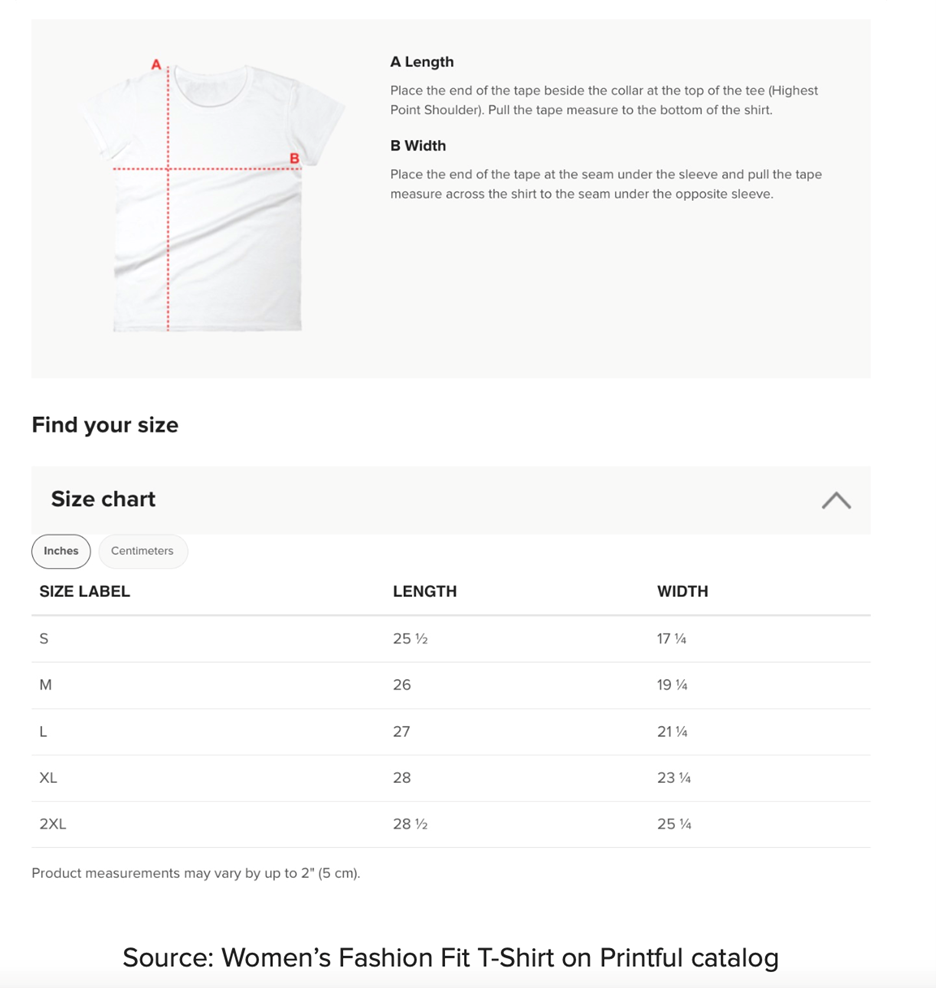
When taking measurements, it’s important to lay the shirt on a flat surface so it doesn’t stretch or move around while you’re measuring. By laying it on a flat surface and using a standard 60-inch measuring tape. Avoid using short rulers or measuring tapes because they’ll likely give you inaccurate measurements. Also, ensure you’re not pulling on the fabric because that will give you inaccurate numbers.
Ask someone to help you take your measurements to get the most accurate numbers. You’ll be standing with a straight back in a normal, relaxed position. Here are key measurements:
Shoulder width—find the tip of the shoulder where the shoulder meets the arm. Measure the length between both shoulder points with the measuring tape bending along the curve of your chest.
Chest width—lift up your arms, so the measuring tape can be placed under your armpits and over the shoulder blades. Then, lower your arms to your sides and breath normally. Measure around the fullest part of your chest.
Waist—run the tape around the narrowest part of your waist. Breathe normally as you do this, and don’t hold your breath. To ensure the best fit of any shirt, take the measurement while you’re belly is expanded on the inhale.
Torso length—measure from the base of the back of your neck down your back to the point where you would want the shirt to end.
Here are the measurements and how to take them.
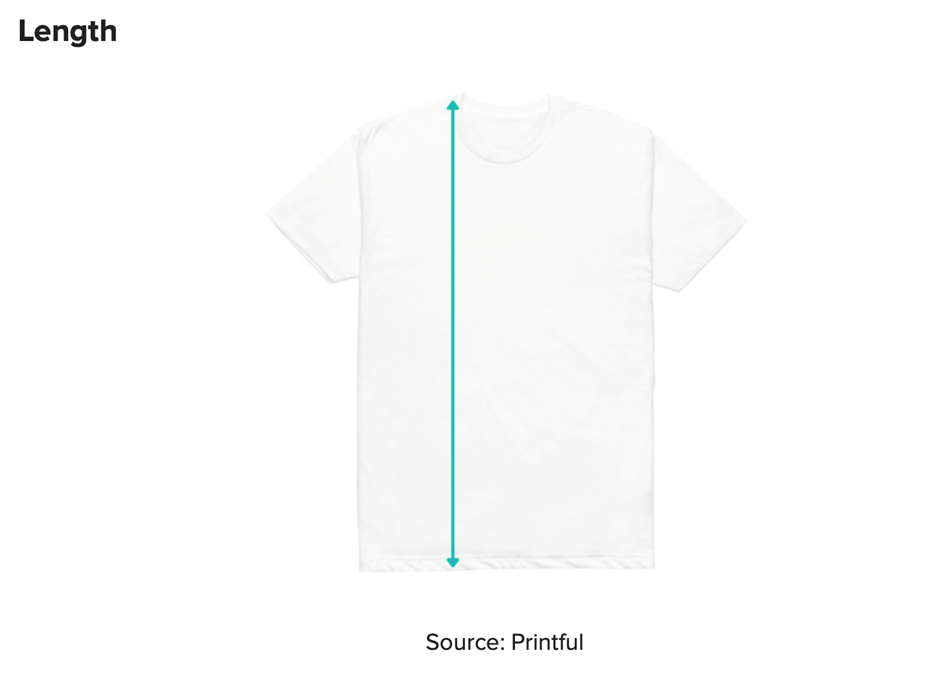 To measure the length, lay out the shirt on a flat surface and measure the distance from the highest point of the shoulder down to the t-shirt’s bottom seam.
To measure the length, lay out the shirt on a flat surface and measure the distance from the highest point of the shoulder down to the t-shirt’s bottom seam.
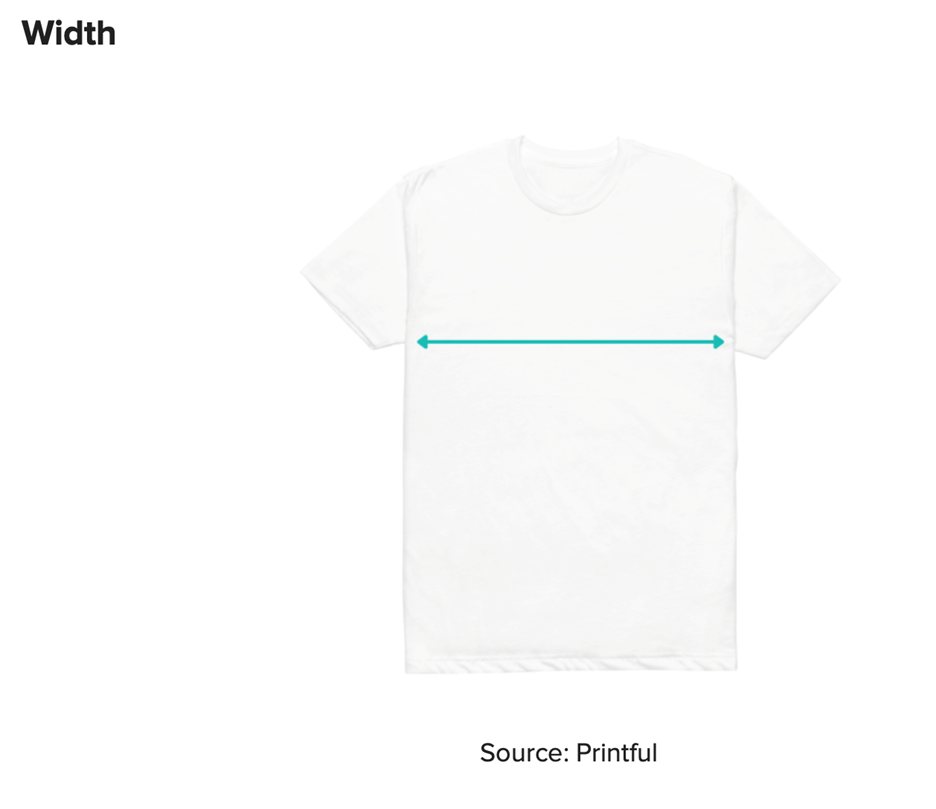 Additional measurements
Additional measurements
The length and width are the key measurements. To enhance the shopping experience and ensure your customers get the right size, you can add the following additional measurements.
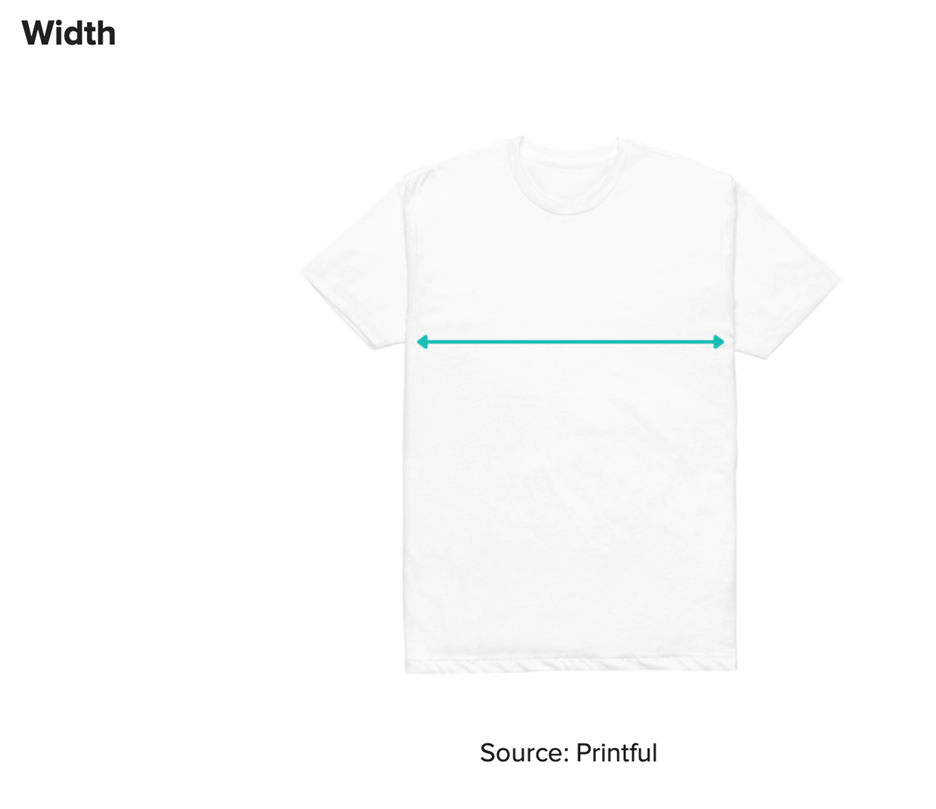
Measure the waist area by placing your measuring tape from one outer edge to the other.
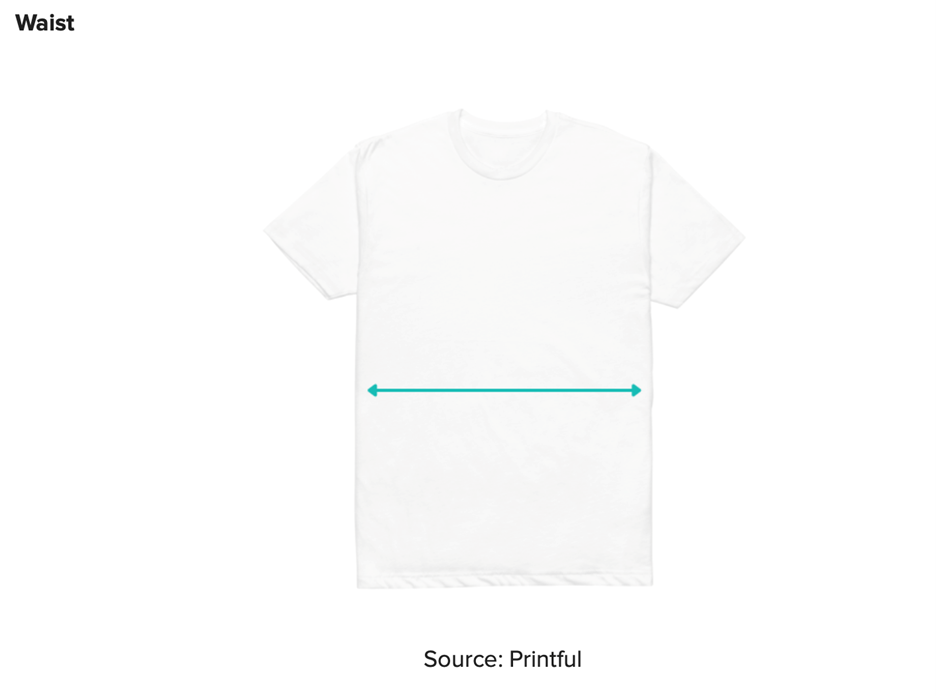
To find out how wide the bottom seam is, measure from one side of the shirt to the other while dragging your measuring tape by the bottom hem.
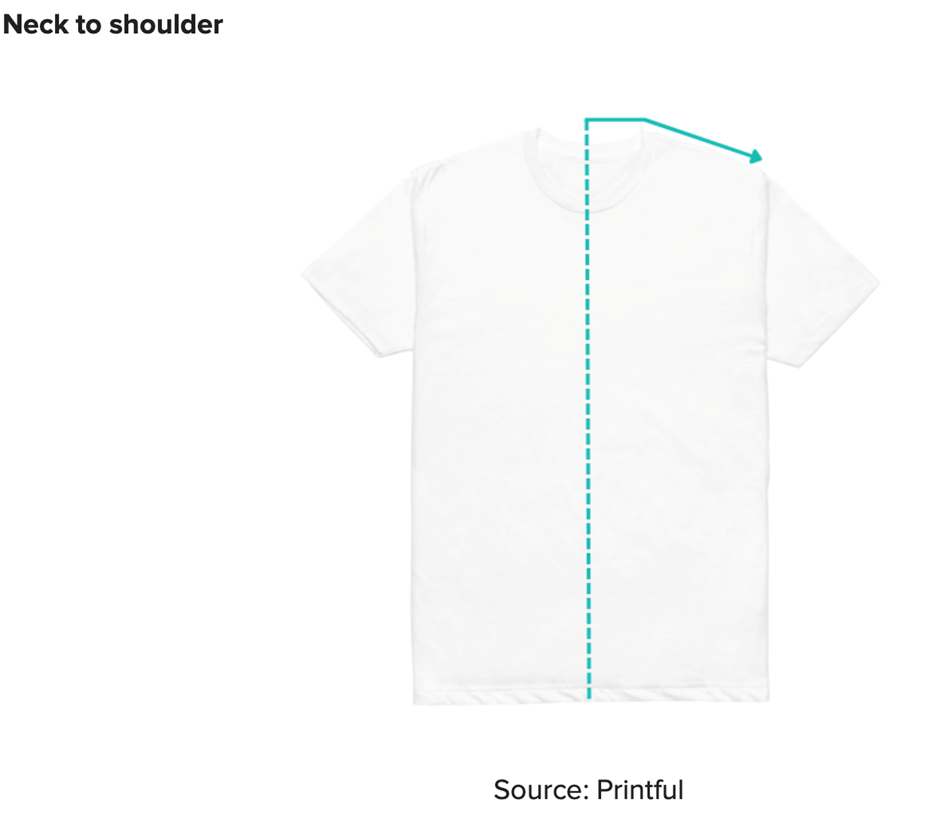
Measure from the middle of the neckline to the highest point of the shoulder, to the tip of the shoulder.
To get the shoulder width, measure the distance from one tip of the shoulder to the other.
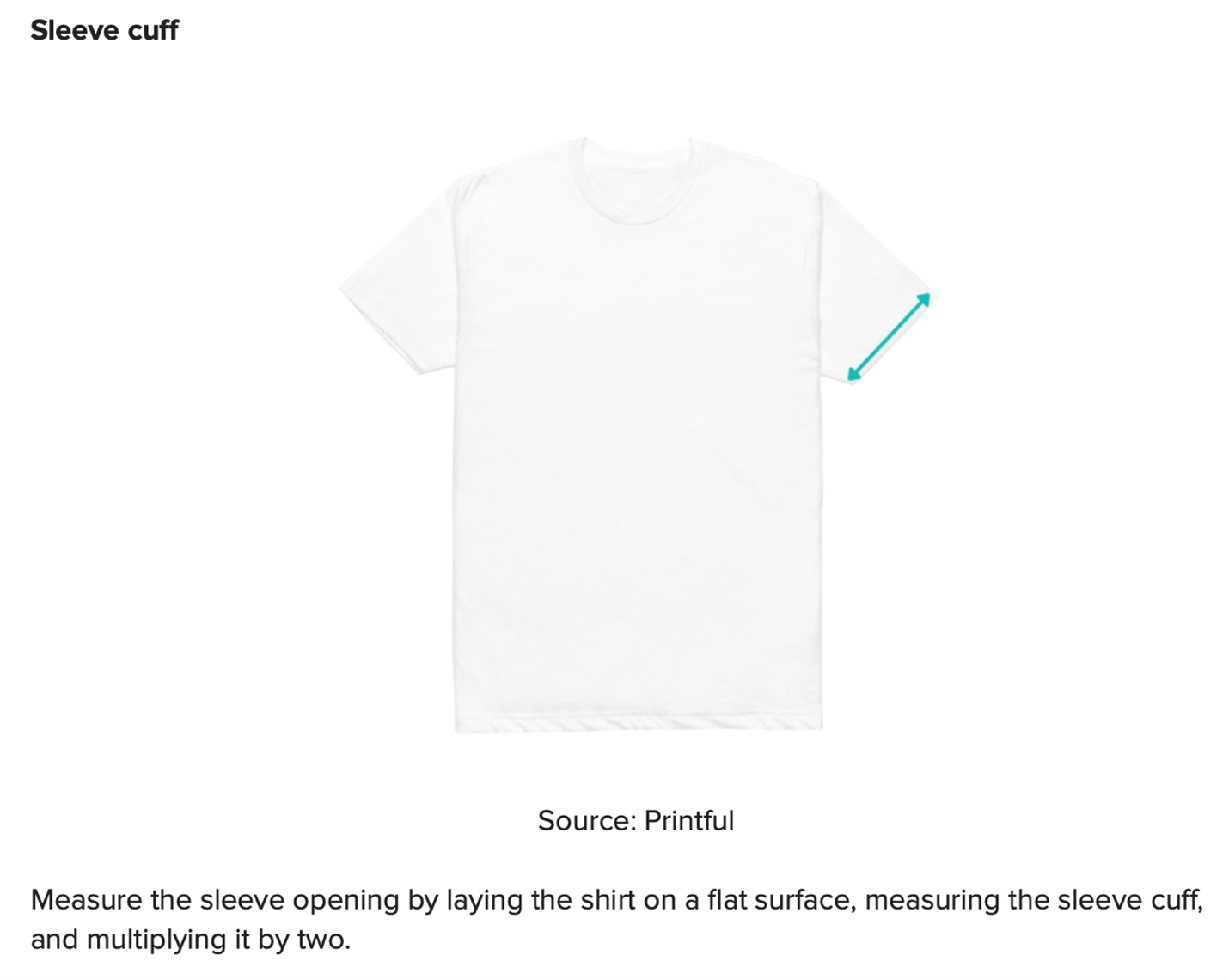
Measure from the tip of the shoulder to the sleeve opening.
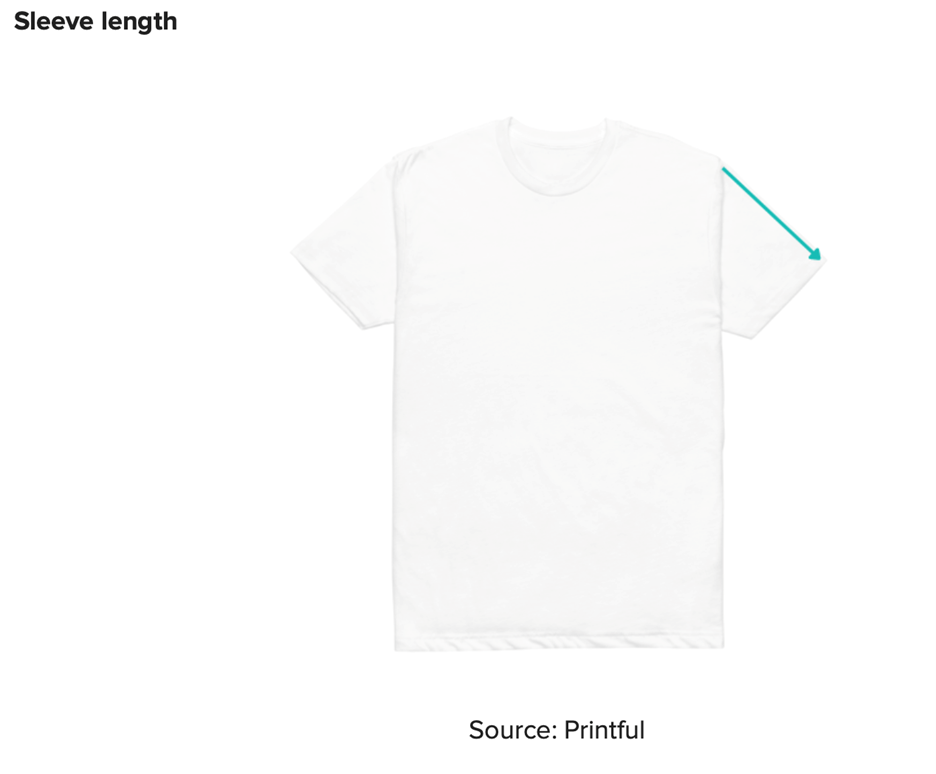
T-shirt fit
What do you think is the most important aspect of a shirt? Color and design are key, of course. But the unsung hero of the perfect tee is the fit.
In the t-shirt world, there are three main fits to consider: regular, fashionable, and relaxed. Each one offers a different feel and style, shaping how the t-shirt looks and feels when you wear it.
The regular fit, as the name suggests, is the standard t-shirt style that sits comfortably on the body and is not closely form-fitting. The fashion fit, on the other hand, is a little more fitted, hugging the body for a sleeker look. And the relaxed fit drapes loosely around the body for a laid-back, casual comfort.
Each fit has its own unique attributes and appeals to different personal tastes and body types. In the sections to follow, we’ll delve into each fit in more detail.
Regular fit
When talking about t-shirts, you’ll often hear the term “regular fit.” Simply put, a regular fit t-shirt, also known as a standard fit, is designed to hang loosely on the body, providing a comfortable and relaxed feel. It’s not too tight or too baggy, striking a balance that suits most body shapes.
The key to a standard-fit t-shirt is its cut. It’s generally straight-sided, meaning the chest, waist, and bottom hem measurements are similar. The sleeves usually have a moderate length that falls around the middle of the upper arm, providing ample room for movement.
A standard-fit t-shirt is a go-to option for those seeking a casual, easy-going look. It’s well-suited for everyday wear and versatile enough to be paired with various outfits.
Fashion fit
Unlike traditional straight, boxy t-shirts, a fashion-fit t-shirt, also known as a fitted t-shirt, is designed to hug the body a bit more closely. The sleeves are typically shorter, the body’s a bit longer, and the fit is generally more tapered.
This type of fit is enhancing the wearer’s physique, emphasizing the chest and arms by reducing excess fabric that can make a t-shirt look loose-fitting. The result is a more modern look that many people prefer, especially those looking for a slightly more dressed-up version of the casual tee.
Fashion-fit shirts are perfect for people who want to look good and feel comfy. They’re a step up from your basic tee, giving you a sharper, trendier look. But they’re still just as comfortable.
Relaxed/loose fit
A “relaxed” or “loose” fit is another popular choice. This type of fit is all about comfort and casual style. A loose-fit t-shirt is designed to hang loosely on the body rather than clinging or hugging the contours. It provides ample room around the chest, waist, and arms, ensuring unrestricted movement.
For many, the appeal lies in its laid-back vibe, making it a go-to choice for casual, everyday wear. But beyond style, it’s also about feeling free and easy in your clothes. The relaxed fit means you won’t feel tightness around your body, making it a comfortable choice for longer wear.
Loose-fit t-shirts suit various body types and can be styled in a number of different ways. They encapsulate an easy, breezy fashion.
